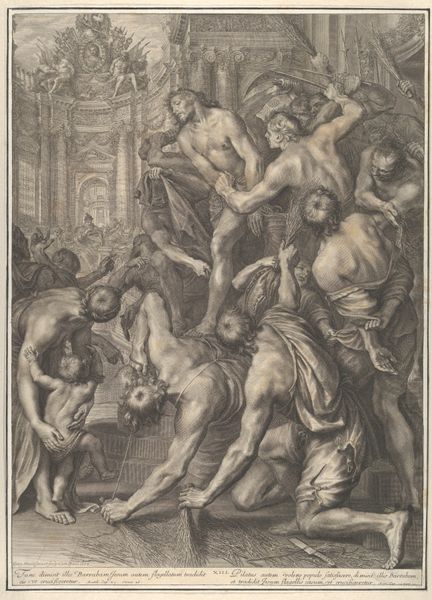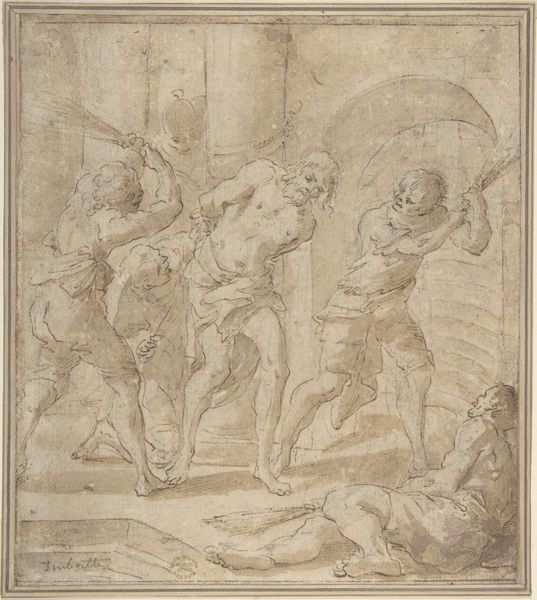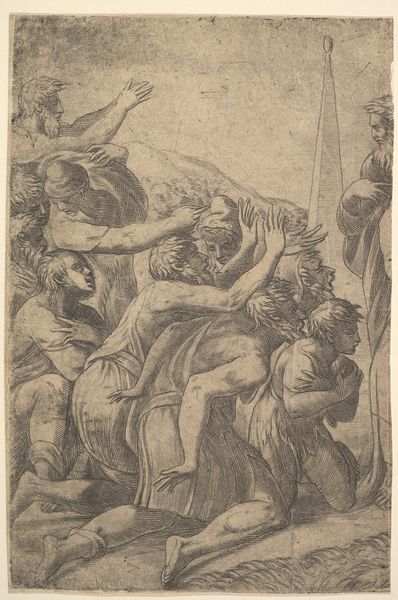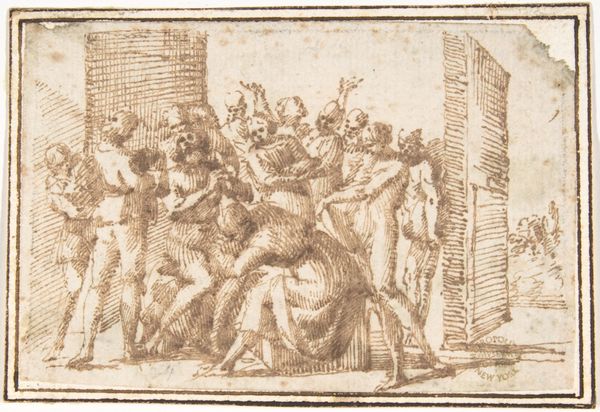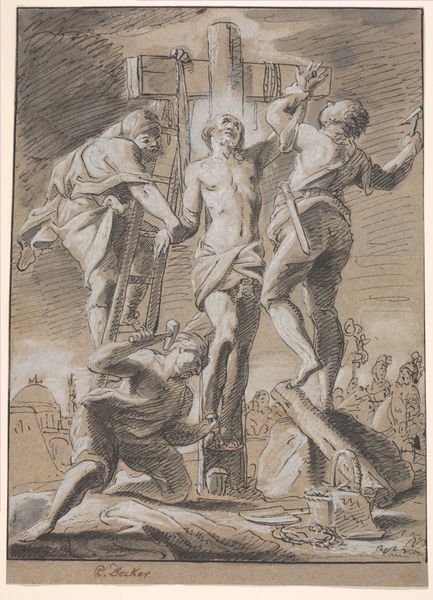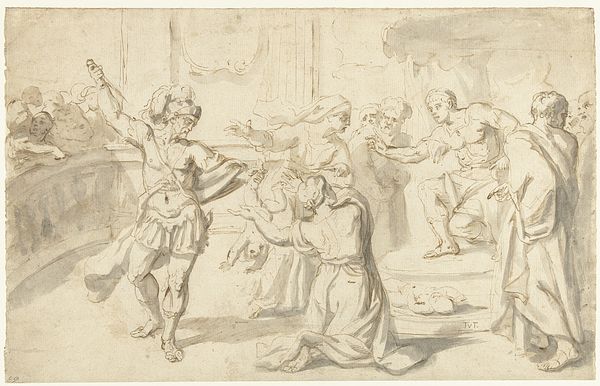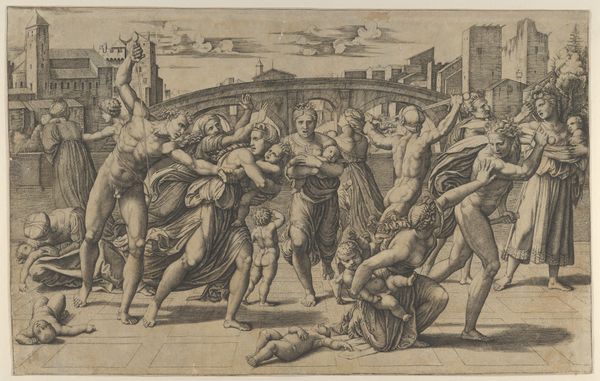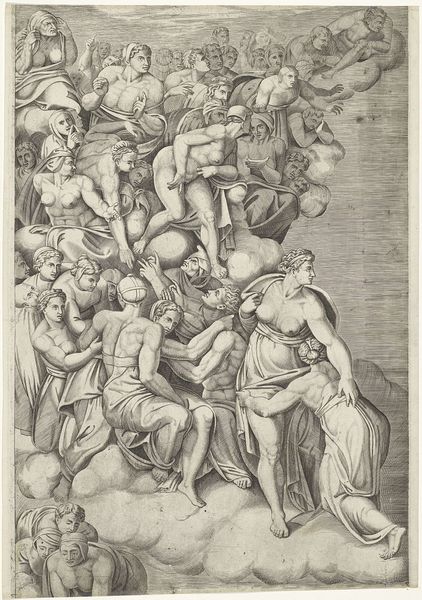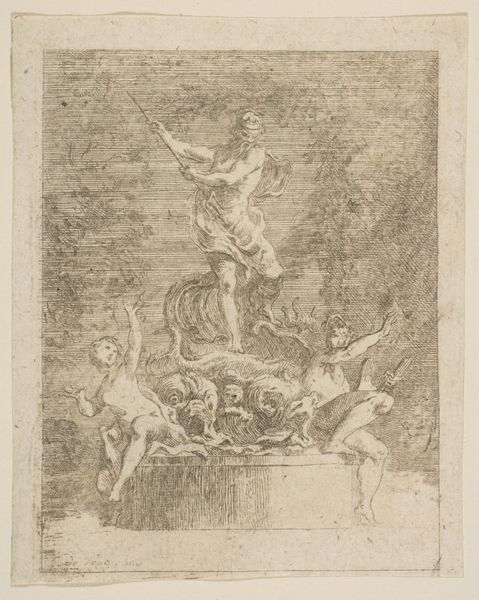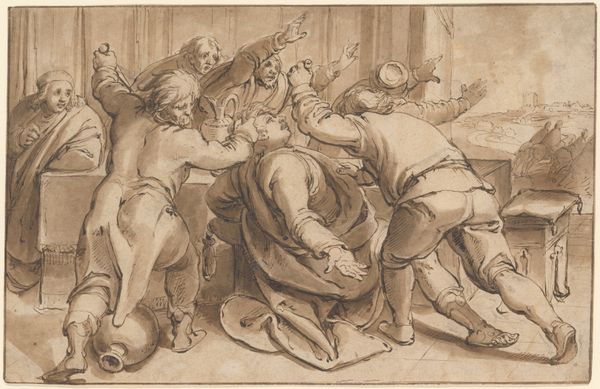
drawing, print, pencil
#
portrait
#
drawing
#
narrative-art
# print
#
figuration
#
11_renaissance
#
pencil drawing
#
pencil
#
history-painting
#
academic-art
#
italian-renaissance
Dimensions: 10-7/16 x 8-1/4 in. (26.5 x 21 cm)
Copyright: Public Domain
Editor: This pencil drawing is called "Massacre of the Innocents," likely created sometime between 1600 and 1700. What immediately strikes me is the raw emotion, even in the sketchiness of the figures. What do you see in this piece? Curator: I see a stark visual representation of state-sanctioned violence, meticulously rendered in pencil. Think about who has historically been rendered invisible or disposable. This scene echoes across centuries, doesn't it? Consider the context in which this drawing was made and its potential ties to sociopolitical themes during its creation. What narratives of power and resistance can we uncover by analyzing the composition? Editor: Power and resistance... I suppose the obvious thing to say is the resistance of the mothers, as they try to protect their children. Curator: Precisely, and consider this within a feminist lens. The bodies of women, their gestures of defiance and anguish – are these depicted merely as victims? Or does the artist grant them agency, a form of protest even in the face of inevitable tragedy? Editor: So, are you suggesting that even in a depiction of terrible violence, we can find evidence of resistance and perhaps even a commentary on gender roles? Curator: Absolutely. And it’s crucial to acknowledge the intersectional aspects: the vulnerability of children, the societal expectations of motherhood, and the patriarchal power structures that enable such atrocities. By acknowledging those links between historical art and our times, it can illuminate critical issues and create opportunities for discussion. What lasting impacts and lessons can we derive when critically examining these difficult depictions? Editor: This is definitely a different way to look at it than I was originally thinking. It’s important to consider the historical context and see beyond the immediate depiction of violence. Thank you for opening my eyes. Curator: Indeed. And remember, art acts as a mirror reflecting societal norms, injustices and also potential areas for positive change. Looking critically will always give you a fuller experience.
Comments
No comments
Be the first to comment and join the conversation on the ultimate creative platform.
